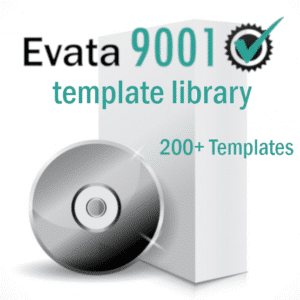Understanding Section 4.3
Determining the scope of the quality management system
This is an educational article on Section 4.3 of ISO 9001, entitled “Determining the scope of the quality management system.”
The purpose of this article is to give you an understanding what Section 4.3 requires.
This article is intended for:
- Those responsible for compliance to section 4.3.
- Those responsible for determining the scope.
- Others interested in this section.
Section 4.3 is entitled “Determining the scope of the quality management system. ” To determine scope is to determine the essence, limits, and boundaries of your system. It is to answer questions like, “Why are we creating this quality management system? What is quality with respect to our products and services? What should be part of the quality management system and what should not?” and “Is our quality management system, as designed, sufficient to ensure the quality results that our stakeholders expect.”
These are pretty fundamental questions, which is why Section 4.3 requires you to start off considering:
- First, the internal and external issues as identified pursuant to section 4.1 of the standard.
- Second, the stakeholder requirements as identified pursuant to section 4.2 of the standard.
- And finally, the products and services that you provide, including their nature and their relationships to each other and to stakeholder requirements.
In light of these considerations, you should be able to define your scope.
Once you have determined your scope, then you are required to document your scope statement, including:
- Products and services that will be included in the scope.
- Exclusions of any part of the ISO 9001 standard from your scope.
- Justifications for excluding any part of the standard.
Let’s go through each of these steps one by one, starting with answering those fundamental questions.
In determining your scope, you are required to consider the outputs of your “Strategic Planning” as developed in Sections 4.1 and 4.2. For more information on the strategic planning sections, you may refer to the trainings for those sections.
Let’s look at some strategic scenarios and how that would affect scope:
For example, if you are planning to phase out a product line over the next couple years, you may consider not including that within the scope of your QMS, especially if it would take a lot of resources to certify that product line only to then decommission it.
Or let’s say you are a young company with limited resources but you can land a big customer if you can certify at least one product line that the customer is interested in; then you may consider limiting the scope to only that product line for the time being.
Or perhaps there is no immediate need for ISO 9001 certification, but certification is the next big step in your long-term strategic plan for continual improvement. That is fine.
Or, let’s say you are seeking a big government contract that requires ISO 9001 certification. If you consider this a rare one-off requirement, then perhaps you will only certify whatever minimum scope is required to qualify for the job. On the other hand, if you expect this will be a common requirement for a variety of government contracts, then you may certify to the maximum scope to be prepared for future prospects.
Another consideration when determining your scope is the types of products and services that you offer. When you consider the types of products and services that you offer, you should consider, for example:
- Their role in your future strategic direction.
- Where they are at in their own lifecycle.
- Their interdependence with other products and services.
- How integrated they are already with existing management systems.
Such considerations may affect your decision to include or exclude certain products or services from the scope of the QMS. Be aware that you may not be able to exclude some products or services, and include others, if there is an interdependence between them such that the quality of one will affect the quality of the other. If you think you have such a situation, contact your consultant to discuss the details.
Some parts of the standard may not be applicable to your company. If so, you may exclude them from the scope of your QMS. You can only exclude a section if it is truly inapplicable to your company. It is only considered inapplicable if its omission would not affect your ability or responsibility to ensure quality and enhance customer satisfaction.
Whenever you exclude a section of the standard, you must provide a written justification for the exclusion.
Usually the justification statement is pretty simple – such as:
“Our company does not engage in [such and such activities] as part of
provision, therefore, this section does not apply.”or
“[Such and such activities] are not required by our stakeholders and are not necessary to ensure quality and enhance customer satisfaction, therefore this section does not apply.”
Or something to that effect.
You can expect the certification auditor to make his own assessment of the inapplicability of any excluded sections, so be sure the exclusion is legitimate and that you feel comfortable justifying your decision to the auditor.
It is always a good idea to have your consultant review your exclusions and justifications.
Again, section 4.3 requires you to document your scope. When drafting your scope, section 4.3 requires that you document each of the following:
- Products and services that will be included in the scope
- Exclusions of any part of the standard from your scope
- Justification for excluding any part of the standard
For details on implementation, please refer to our implementation videos. Also, our document templates provide detailed instructions on how to draft scope statement, as well as many examples of scope statements.

